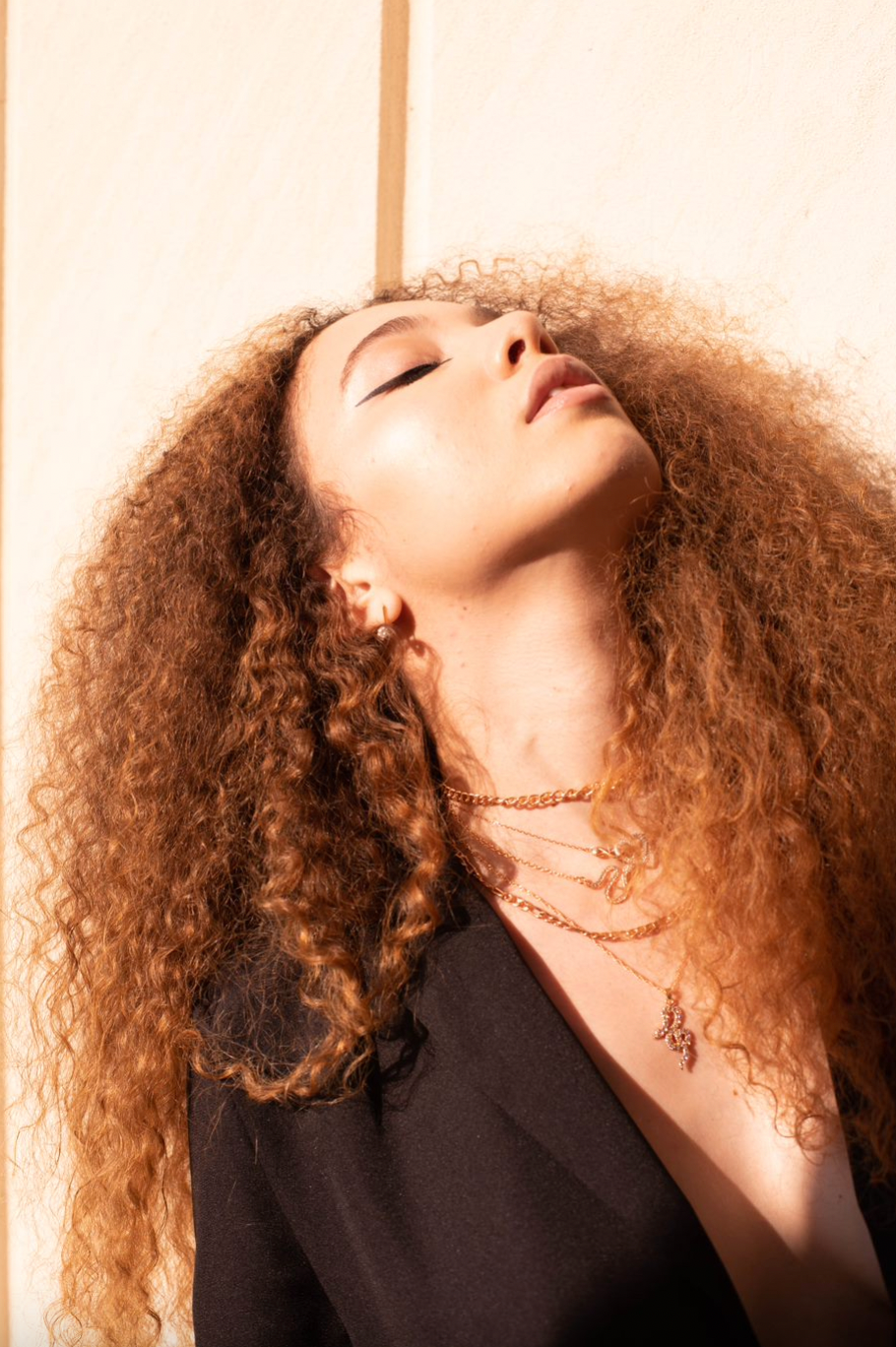
With so many products available for curls on the market, it can be super confusing and frustrating to find the right formulations and routines that work with your hair type. All curls are unique and respond to ingredients and methods completely differently. Trial, and what sometimes feels like a lot of error, is part of the curly journey! A great place to begin or revise that journey starts with identifying your curl pattern.
Keep in mind that your crown might have several types of curl patterns, and will change with heat use and even haircuts. Healthier curls, no matter your pattern or density, start with embracing your natural texture. Heat treatments, chemical straighteners, and harsh products will strip your curls of much-needed moisture and cause them to lose definition and volume. All of our CURLē products are custom formulated for your curl unique hair, and are clean, natural, and free of sulfates, parabens, and silicones.
Once you’ve read how to distinguish your curl pattern, head over to take our online quiz for tailored product recommendations and tips!

Wavy - 2a, 2b, 2c
Wavy hair is the most relaxed end of the curl spectrum. If your strands have a lot of volume and form S-shaped patterns, whether deep or elongated, you have wavy curls! There is a lot of variation in this curl pattern, from straight roots and wavy mids to near-corkscrew coils around the 2c end of the spectrum. Many with wavy hair often don’t even know the true potential of their curls, opting to straighten their hair or brush out their waves! Frizz and dryness are major factors with this hair type, so it’s important to search for products that emphasize light-weight hydration and hold. Wavier hair tends to be finer and smoother than tighter curl patterns, making product selection a bit tricky. Start by incorporating leave-in conditioner mists after washes or to refresh second-day waves. To help define your curl pattern, opt for a thinner gel or finishing mousse to enhance your definition and defeat frizz. Above all, focus on light-weight ingredients like argan oils and formulations that won’t weigh your strands down. Apply products appropriately, scrunching in small amounts at a time, to avoid overwhelming your hair texture.

Curls - 3a, 3b, 3c
The level 3 range of curls are more tightly defined and packed than waves, often forming partial or full corckscrews and ringlets in consistent patterns all over the head. Like 2a-c curls, 3a-c curls are super susceptible to frizz, humidity, and dryness. However, 3b and 3c curls tend to stay in formation much more easily than 3a and wavier textures, making it easier to define and hold on to styles for multiple days at a time! To ensure maximum product absorption and hold, we recommend applying your leave-in conditioner and styling creams while the hair is wet. This nixes frizz from the start and prevents too much brushing and styling when the hair is dry, which generates major frizz. Apply hydrating creams generously and consider deep conditioning every week or every other week. To style, scrunch or rake a defining creme or gel into your curls and diffuse on cool. Break the gel cast with a lightweight hair oil or serum for shine. To preserve your curls, invest in a silk pillowcase or bonnet and wear your curls in a protective style like a “pineapple” while you sleep!

Coils - 4a, 4b, 4c
Type 4 curls are the tightest, kinkiest, and most coiley hair type! Overall, these strands tend to be finer and more prone to dryness and breakage than wavy and curly textures, meaning they need unique products and styling routines to unlock their full potential. Type 4 patterns have stunning volume due to the tight S or Z shapes formed by their densely-packed curls and need lots of moisture to combat shrinkage when dry. Products with “heavier” moisturizers, like jojoba, coconut, and shea formulations deliver maximum hydration for this hair type. Always condition and apply leave-in conditioner during wash days and apply a deep conditioning mask weekly for shine and hair health. If your hair is low porosity, reduce the amount of conditioning treatments to bi-weekly or monthly to avoid buildup and excess protein saturation. It might take some experimentation to find the optimum balance of moisture for your strands.
This pattern is also most susceptible to heat damage and chemicals that strip the hair, so it’s extra important to read your product labels! Give your curls the best nourishment and avoid products with sulfates, parabens, and drying artificial fragrances. In terms of styling, always make sure to brush your hair and apply products in sections to avoid breakage. Protective styles are a gorgeous way to prevent breakage and experiment with fashion-forward braids, twists, and updos. They’re also a super efficient way to to preserve styles for longer periods of time!
Photos by:
Vitae London, Jake Melara, Vlada Karpovic

